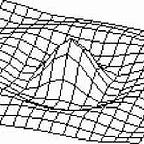ZX Spectrum golden years — Part III
1988
Original games were starting to give way to licensed products. Software companies were cottoning on to the fact that if they get the rights to the latest film, TV show or coin-op then previous experience dictated that those games sold more than other games which didn’t have such an endorsement. Indeed, some of the larger labels decided to release nothing but licensed games unless a particular game was truly special. The days of the bedroom coder were numbered as the software houses turned into professional organisation semploying teams that churned out game after game.
Best games of 1988
Robocop — by mixing the action with clever mini-games, such as rescuing hostages and putting face IDs together, Ocean created a tie-in that few other developers were able to improve upon. The futuristic shoot-’em-up was a stunning effort boasting large detailed visuals that do a great job of capturing the spirit of the original film, while the action delivered on every hyper-violent promise of its Hollywood inspiration. RoboCop’s become a monster hit and formed the template for most movie licenses released after it.
Abadia del Crimen, La — not all software development was done in the UK. Spain also had a vast production of original games for the ZX Spectrum. La Abadia Del Crimen (translated as The Abbey of Crime) is based on Umberto Eco’s novel “The Name of the Rose”. The game was an isometric adventure similar to the Fairlight games that required the player to solve the murder mysteries while simultaneously observing the rites and obligations that being a monk entail. Failing to follow the rules resulted in expulsion — and game over. La Abadia Del Crimen was a stunning game that deserves to be played at least once.
Marauder — developed by Hewson’s is an immensely playable top down shoot-em-up. The Marauder Battlecar trundles around a shaded background. The landscapes of the different levels scroll smoothly as you try to blast the mounted turrets and enemy cars. Very well implemented with excellent sound and good quality graphics. Marauder keeps you coming back for more.
Cybernoid — requires insane levels of concentration, dexterous joystick skills and the patience of a saint. Cybernoid always pulls us back for one more go and remains one of the more polished games on the system. What makes it so essential is its vibrant visuals, intricately designed levels and spot-on controls.
Target Renegade — not having the licensing rights to Double Dragon, Ocean launched a spiritual successor to Renegade, and put a superbly British spin on the co-operative scrolling beat ’em up. With its bold, cartoony visuals, incredibly violent gameplay and frantic two player action, Target Renegade instantly captured the hearts of those arcade gamers. It took players on a rampage through car parks, snooker clubs and impoverished ghettos. Punches, vicious knees to the groin and flying kicks, were just a few of the moves the brothers had access to, while weapons like hammers, chains could be used to dish out additional damage to the hopeless foes. Fantastic stuff.
Arcade Conversions
R-Type — on the Spectrum is a thing of beauty and is easily one of the best arcade conversion to grace the machine. The graphics are incredible, with huge, brightly colored sprites, very little color clash, smooth scrolling and amazing looking bosses. Level layout throughout is spot on, with many classic scenes from the arcade original being instantly recognizable. The introduction of the indestructible Force weapon on Irem’s spectacular scrolling sci-fi shooter proved to be a seminal moment in game design history. R-Type is the side-scrolling shooter by which all others are measured.
Operation Wolf — released into the arcades by Taito it immediately grabbed the attention by way of an Uzi mounted on to the front of the cabinet! The gameplay sees you play a one man army Schwarzenegger / Stallone-style commando who has to work their way through six stages blowing away enemies and rescuing hostages.
The game is big, noisy, colourful fun and alongside Outrun and Afterburner maybe best epitomises everything that made arcades so fun in the mid-80’s.The ZX Spectrum version was actually pretty good! It featured some nice music on the 128k machine and like the arcade the sprites were nicely drawn, large and swamped you! Unfortunately the graphics were monochromatic, making it sometimes difficult to detect enemies against the background.
Chase H.Q. — was the best converted game, best racing game and one of the best experiences you can have on any 8 bit machine.
This conversion from Taito arcade puts the player in the seat of a Porsche 928 and sent them out to rip up the highways in pursuit of vicious criminals. The brilliance of Chase H.Q. was its moving objective. You weren’t racing toward a static finish line, but hunting down a fleeing criminal. Prang your car too often, or curb it on a badly-taken corner and not only do you lose points against the time, but your quarry increases the distance between you and them. Split second decisions had to be made as you tore toward the junctions, or risked shortcuts along dirt tracks, until you put expensive motor on the bumper of the perp and ran the sucker off the road. The driving mechanics and tracks of Chase H.Q. were quite superior to Out Run, too, making this the unequalled pinnacle of Spectrum driving games.
The competition between the magazines went up a notch with the cover tape wars in 1988 it became the norm for every magazine to have a tape stuck to the front of it. The sales of new games were being damaged due to this influx of “free” games.
Next : The ZX Spectrum golden years — Final https://medium.com/p/fcb89a75eee8
